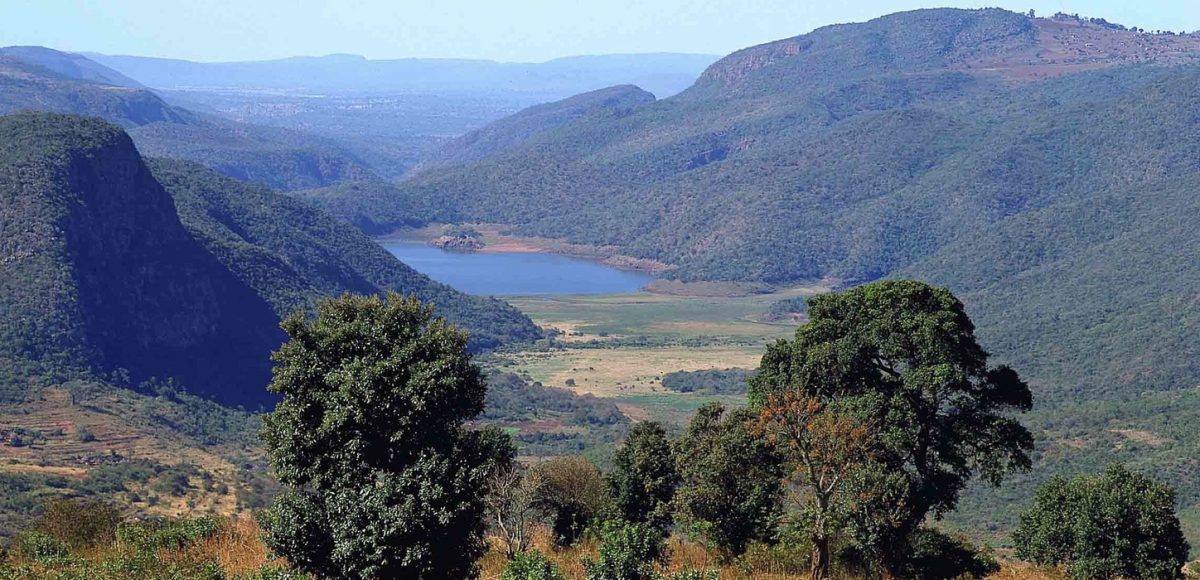An anomalous abundance of platinum discovered at an archaeological site in South Africa offers support in favor of a controversial theory, which attributes abrupt climate changes that occurred 12,800 years ago to a possible cometary impact.
The Younger Dryas Impact Hypothesis, at one time widely dismissed by scientists, has continued to gain traction over the last several years. Most notably, the presence of platinum spikes in association with this period of cold reversal that occurred around 12,800 years ago strongly suggests that the climate changes may have been the result of an impact or airburst by a comet.
The late Quaternary archaeological site Wonderkrater, located in the Limpopo Province in South Africa, consists of a large spring and peat mound with deposits dated to more than 30,000 years ago. With the rich information this Middle Stone Age site has yielded, it was an ideal place to look for evidence of the curious “platinum spike” associated with the Younger Dryas, which had not previously been found on the African continent.
A team of researchers led by Professor Francis Thackeray of the University of Johannesburg’s Evolution Studies Institute now says they have found such evidence, in the form of temperature changes based on pollen analysis, as well as a similar abundance of platinum to that found in association with the Younger Dryas at other locations around the world.
According to the study’s extract:
A prominent spike in platinum is documented in a Wonderkrater sample (5614) with a mean date of 12,744 cal yr BP using a Bayesian model, preceding the onset of the YD cooling event. The YD platinum spike at Wonderkrater is the first to be observed in Africa in the southern hemisphere, supplementing new discoveries from Patagonia in South America, in addition to more than 25 sites with such platinum anomalies in the northern hemisphere.
As lead author Thackery notes, “The observations from South Africa serve to strengthen ongoing assessments of the controversial YD Impact Hypothesis, whereby it is proposed that a meteorite or cometary impact contributed to a decline in temperature, associated inter alia with dispersion of atmospheric dust, mammalian extinctions and cultural changes.”
New evidence in support of an extraterrestrial source behind an abrupt climate change event that occurred at the end of the last ice age has been found in Africa, according to a team of South African scientists. The discovery marks the first such evidence from the African continent found to-date.
The period is known as the Younger Dryas, named for the flower Dryas octapetala which had thrived in the colder climate of both the Pleistocene and the cold reversal associated with the Dryas, was once thought to be the result of natural temperature changes associated with the end of the ice age. However, evidence for a more impressive underlying cause has steadily accumulated over the last several years, which includes the unusual platinum spike found in many locations worldwide, as well as indications of widespread biomass burning on the North American continent.
Noting the presence of changes in the archaeological record that coincide with the Dryas period, Thackery says that he and his coauthors “cautiously hint at the possibility that these technological changes, in North America and on the African subcontinent at about the same time, might have been associated indirectly with an asteroid impact with major global consequences.” The team is cautious, however, about insinuating that there was one single element or agent which contributed to such changes worldwide.
Previous studies have found similar evidence in support of an impact elsewhere around the world. In one notable study from earlier this year, extensive research conducted in Chile at the Pilauco site led by Mario Pino with the Transdisciplinary Center for Quaternary Research (TAQUACH) at the Universidad Austral de Chile in Valdivia, Chile, found concentrations of platinum, gold, high-temperature iron and chromium-rich spherules, and “native iron particles rarely found in nature.”
“We cannot be certain,” Thackery notes of the more recent African research, “but a cosmic impact could have affected humans as a result of local changes in environment and the availability of food resources, associated with sudden climate change.”
Thackery further states that the evidence obtained by the team “is entirely consistent with the Younger Dryas Impact Hypothesis.” The team’s study appeared in the journal Palaeontologia Africana, and can be found online here.
This post originally appeared at SevenAges.org.
Image of Limpopo Province, South Africa, via Wikimedia Commons.



